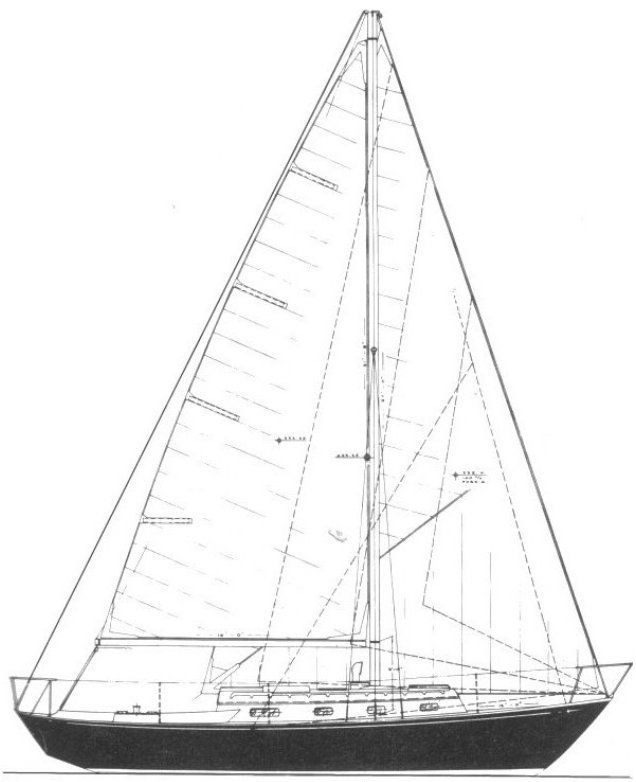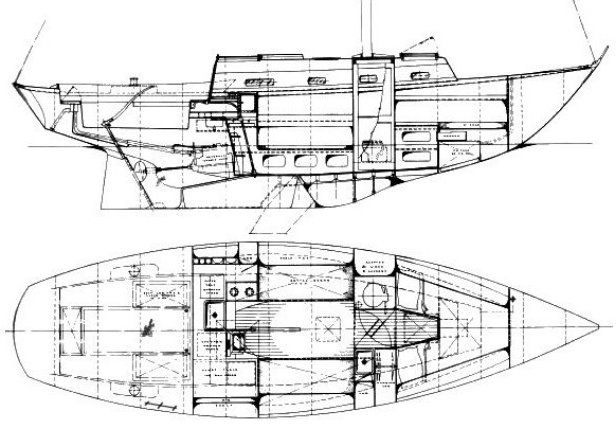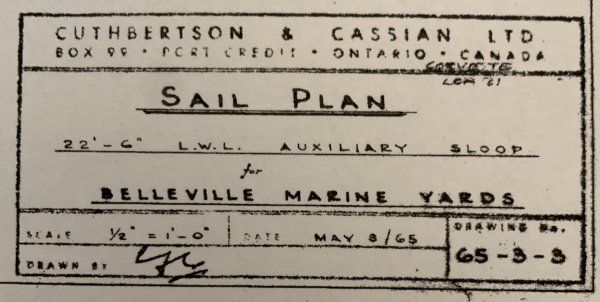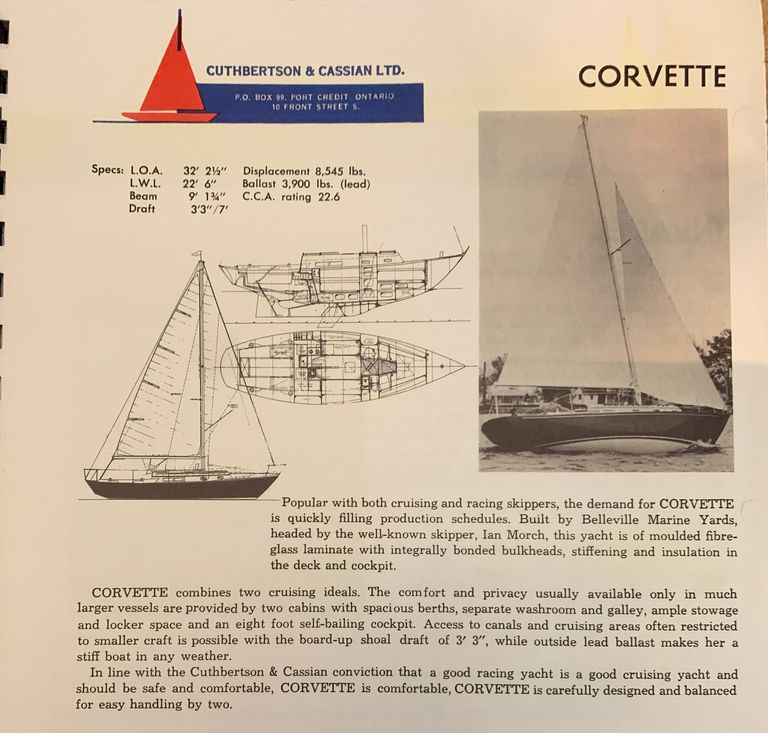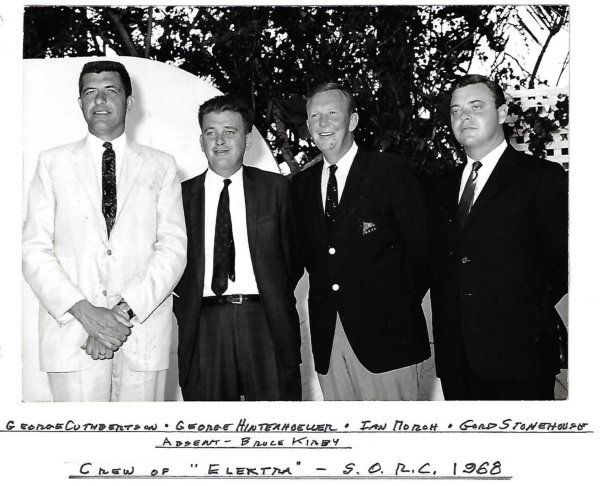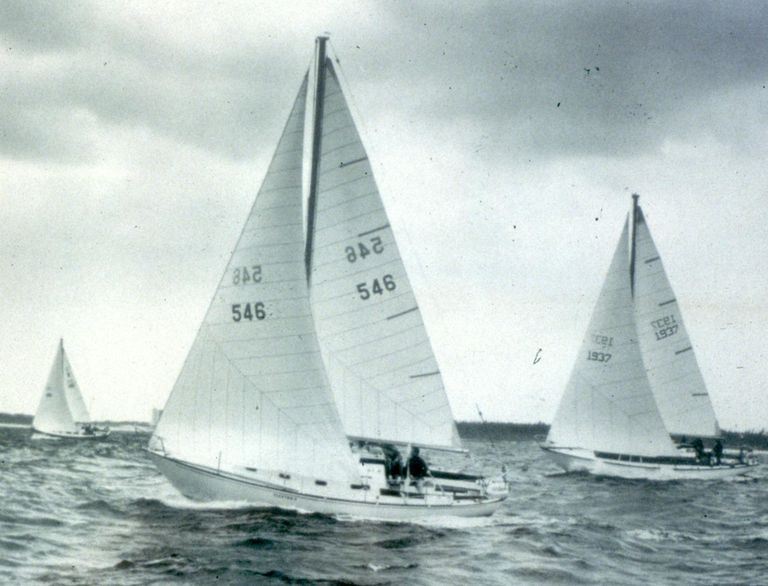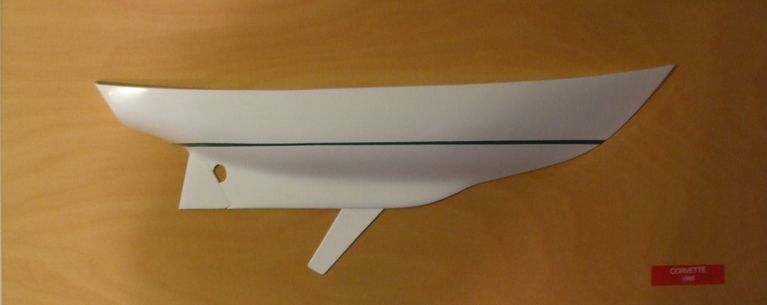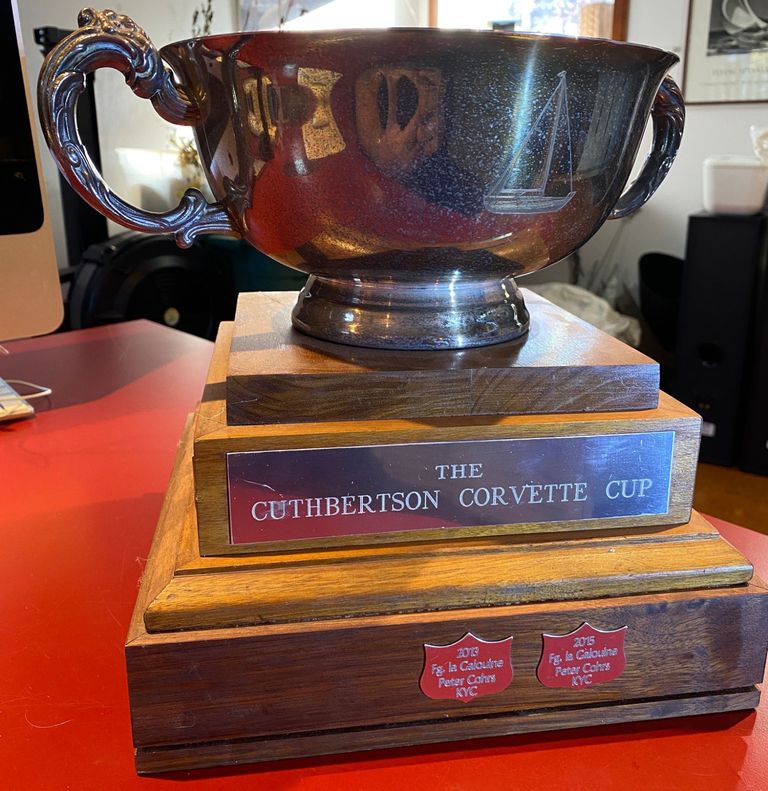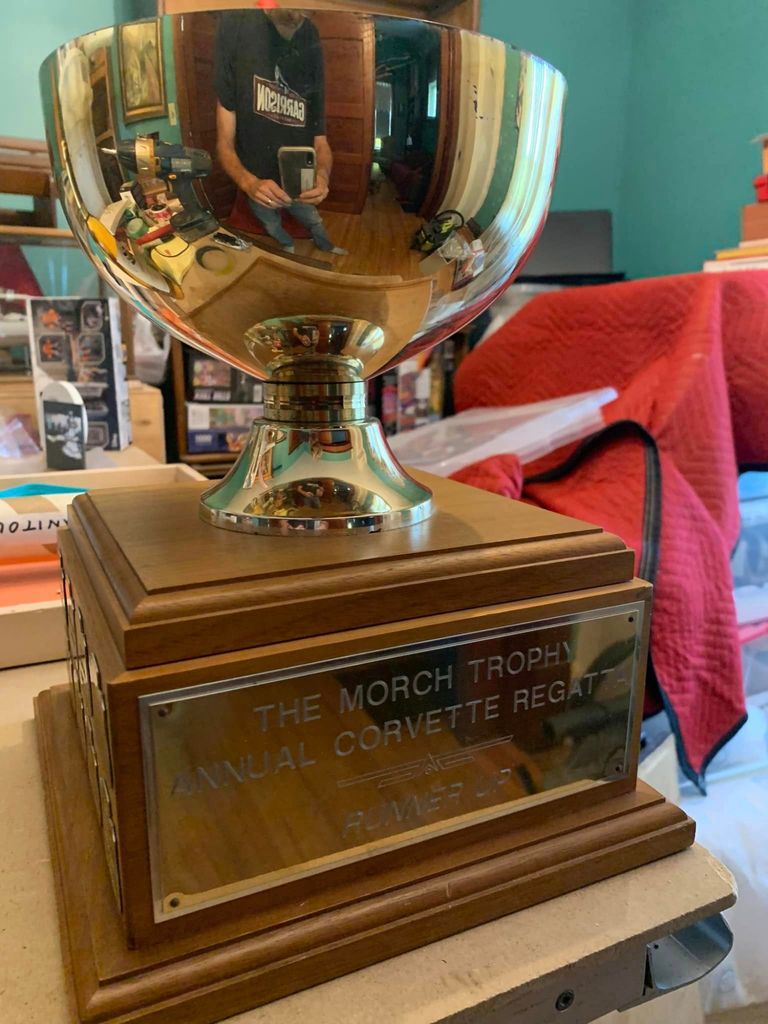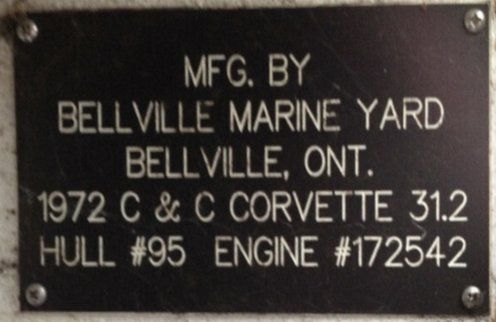C&C 31 Corvette
LOA: 32' 2 1/2" LWL: 22' 6"
Yacht Name
Escape / Oengus,
Eclatant - Nonsuch,
Temeraire - Elektra II,
Saelith,
Windago,
Victoria II,
Valor II,
Astral,
Pas Partout - Kamp Kiwi,
Periwinkle , Dakota,
Valida
DWG #
65-3
2001.0066.0447 (1-19)
Designer / Draughtsman
Cuthbertson, George Harding : GHC,
Cuthbertson and Cassian Limited,
Project Manager
Adriaanse, Henri M.
Year of Design
1965
Builder
Belleville Marine Yard Ltd.
Notes
"She was a good little boat from day one," said George Cuthbertson of the Corvette, which he designed back in 1965. In those pre-IOR days, boats designed to the Cruising Club of America (CCA) rule were in vogue. The rule favoured heavy displacement and shoal draft, and produced family cruisers that were also adept on the race course. Ian Morch, owner of the Belleville Marine Yard, wanted to build a boat with shoal draft which would be in demand in the Bay of Quinte, and perhaps further a field in Montreal and Chesapeake Bay. He commissioned Cuthbertson and Cassian (C&C) Limited to come up with a suitable design.
Design hull no. 65-3 (the third project started in 1965), was named after the most famous Canadian World War II class of convoy escorts, the Corvette. Morch quickly put the boat into production. Hull no. 1, Victoria, was delivered to Toronto's John Hilton in the spring of 1966. The Corvettes continued in production until 1971. Altogether 167 vessels were built. There were some large yearly production runs; 41 boats were built in 1968/69, and 52 in 1969/70. The original base price was $12,500.
Electra II (now Temeraire, lying in Belleville), hull no. 34, was trucked to Florida for the 1968 SORC series. Ian Morch skippered, with George Cuthbertson, boat-builder George Hinterhoeller, designer Bruce Kirby, and the owner, Gordon Stonehouse, as crew. The boat had been sailed only once when they started the Lipton Cup Race held off Miami, but they finished first in Class D and 24th in a fleet of more than 100 yachts.
That same year in the 184-mile Miami-Nassau race Electra II finished second overall in the fleet, and first in Class D. Her third and final race of that series was the Governor's Cup, a wind-ward-leeward course, sailed off Nassau in 25-knot winds, Electra II placed fifth in her class, boat for boat, beating vessels five feet longer. Her CCA rating was 25.5, and was, in Ian Morch's opinion, "just a little on the heavy side for a Corvette". Still, her SORC performance was an astonishing success for a boat just 32-feet long.
Today the Corvette can only be described as traditional, with her relatively narrow beam, long overhangs and graceful sheer. The deckhouse is of moderate size, well in keeping with this style of vessel. The mainsail and fore triangle are of equal area, a moderate 444 sq. ft. on a vessel displacing 8,545 lbs.
Many buyers were attracted to this design because of the shoal draft (3 ft. 3 in. with the board up) and long keel. The centreboard trunk is in the keel and does not intrude into the accommodations above the floorboards.
The decks are wide, with outboard shrouds, and the foredeck is large. The cockpit is eight feet long, with straight benches, and the tiller sprouts from the cockpit sole.
The boat is well ballasted, carrying 4,000 lbs. of bolted-on lead just forward of the centreboard. The external ballast is well placed to absorb the hard knock of grounding in the shoal waters she was designed to sail.
All the Corvettes were built with the Universal Atomic 4 gasoline engine with direct drive as auxiliary power. Some owners converted to diesel; others installed a reduction gear on the Atomic 4, and increased the propeller diameter on a slower turning shaft to get a bit more push out of the engine.
The Corvettes were built with a balsa-core deck in the early days of fibreglass/core technology. Some owners complain of rotting core material because of inadequate backing pieces and sealing. But they also note that because the hulls were not lined, it is an easy job to cut out the glass and core from below decks. The offending material is replaced with foam core and epoxy, or, in the way of bolted on equipment or stanchions, backing pieces. Many owners are finding that after twenty years the ferrous centreboards must be removed for cleaning and anti-rust painting. Also the pins and pennant need replacing.
Bill Nichols, nine-year owner of Cadenza (no. 75), and formerly a keen racer in Lake Ontario's LORC series, says the boat was great fun on short courses in white-sails-only racing. However, he adds that when the boat is pushed hard in brisk winds on a broad reach, the shallow rudder will lose control, making broaches a common occurrence.
Most Corvettes are now well-loved cruising boats, with many owners trailering to places like Georgian and the Chesapeake Bay for summer cruises. Tom Liban sailed Saelith (no. 96) to the Bahamas and further south for a two-year sunshine cruise.
Though the boats were well-built and seaworthy, the Corvette's interior was spartan. The condition, equipment and level of comfort of used Corvettes are greatly dependent on the maintenance and upgrades done by previous owners. However, they are fine sailers, are trailerable (requiring wide-load permission in the daytime only), and provide great value for a couple or a small family seeking a mid-sized cruising boat.
https://www.canadianyachting.ca/boat-reviews/sail/1168-corvette-sail-boat-review
The C&C Corvette, designed in 1965, is one of the oldest Cuthbertson & Cassian designs still sailing in significant numbers. Only the 1963 Hinterhoeller built Invader 36 precedes it as a Cuthbertson & Cassian fiberglass production sailboat. On the heels of an extremely successful 50th Anniversary Rendezvous hosted at the prestigious Royal Hamilton Yacht Club in 2015, the 2017 Bi-Annual Rendezvous will be held at the other end of the lake, at the venerable Kingston Yacht Club. In addition to the Corvette, KYC is also inviting all Frigates (the big sister to the Corvette), Invaders and Crusaders.
A Little History on the Corvette:
The Corvette was designed by the rising design firm of Cuthbertson & Cassian for Ian Morch as the first production product of his newly established Belleville Marine. It had been previously decided that all Cuthbertson & Cassian product built by Hinterhoeller Yachts, including the first ever Cuthbertson & Cassian fiberglass design, the Invader, were to be keel boats, while the Belleville product would be centerboarders. Morch and Cuthbertson already had a long history together, having known each other while studying Engineering at the University of Toronto. Morch later purchased Ca Va, the first steel CN-35 imported by Cuthbertson’s Canadian Northern Company from Kurt Beister in Germany, and had then built a custom wooden Cuthbertson design named North Star in Belleville. So it was no surprise that Morch would turn to the design firm of Cuthbertson & Cassian for the design of his first fiberglass production sail boat. And remember, this was before Red Jacket had brought Cuthbertson & Cassian to international notice.
The Corvette preceded the design of Red Jacket by several months, and made her International racing debut at the 1968 SORC. This is the SORC which Red Jacket won over all, after winning her division the previous year. The Corvette Elektra, owned by Gord Stonehouse and helmed by Bruce Kirby, with George Cuthbertson, George Hinterhoeller and Ian Morch in the crew raced in Class D, finishing second in class in Miami-Nassau race. The following year, Cuthbertson & Cassian, George Hinterhoeller, and Ian Morch would invite Erich Bruckmann, builder of Red Jacket, to join them in the creation of C&C Yachts. The whole C&C Concept may well have evolved in off watch discussion among the crew of the Corvette Elektra during the 1968 SORC! Ian Morch would become the first President of the new company. Both Cuthbertson and Kirby were inducted into the Canadian Sailing Hall of Fame in May of 2014 at a gala dinner at the Kingston Yacht club to celebrate the opening of the New Age of Sail exhibit at the Marine Museum of the Great Lakes at Kingston. It is with sadness that we heard of Ian Morch’s death in October of 2014.
One hundred and sixty seven Corvettes were built between 1965 and 1971, at which point Belleville Marine was closed and Morch parted company with C&C. The last few Corvettes were actually built by the Hinterhoeller production facility of C&C Yachts in Niagara-on-the-Lake, and can be differentiated from the Belleville built boats by their black anodized perforated C&C toe rails.
Following the introduction of the Corvette, the Invader tooling was shipped from Hinterhoeller to Belleville to be converted to a keel/centerboard configuration and renamed the Frigate. However, prior to that conversion, a number of Invaders were actually built by Belleville Marine. The Frigate was then followed by the 40′ Crusader, all designed by Cuthbertson & Cassian.
https://www.corvettesailboatassociation.com/rendezvous-2015/
https://discover.cabhc.ca/uploads/r/community-archives-of-belleville-and-hastings-county/6/8/5/685f25ab8f9b3d6a5dc905e825b8540e5b31984b099a3b5af8347fae9e6e0b7d/RW-1992-09-27p6-7.pdf
Number Built
165
Web Link
https://www.corvettesailboatassociation.com
All rights reserved. Motion Designs Limited
© 2022
We need your consent to load the translations
We use a third-party service to translate the website content that may collect data about your activity. Please review the details in the privacy policy and accept the service to view the translations.
